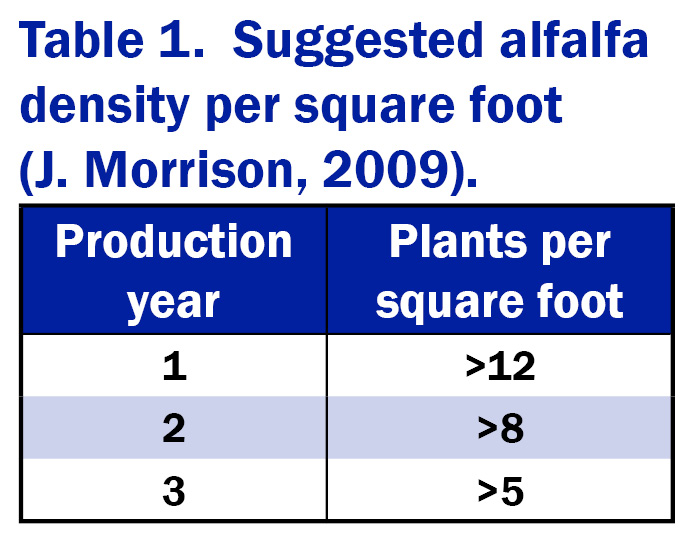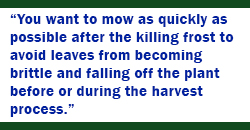
Deciding on a late alfalfa harvest
 By Nathan Hrnicek, Vita Plus forage consultant
By Nathan Hrnicek, Vita Plus forage consultantMany folks are already considering a late cutting of alfalfa this year due to the many challenges faced during the 2019 forage season. Forage inventories on many farms have been depleted due to the incredibly harsh winter, a high percentage of alfalfa winterkill, and a later-than-normal corn silage season. As with many questions we receive, the answer isn’t broad and clear; rather it depends on each farm’s situation.
When considering a late alfalfa cutting, think about the following questions:
- How is your current forage inventory? As noted, many folks need additional forage inventory. Be sure to have an accurate forecast of how long your forage will last into 2020.
- What are the current conditions of your fields? How old is the stand? Are you considering rotating it next year? How did the production of this year’s stand compare to other years?
- How many cuttings have you taken in 2019? If you missed a cutting this year due to weather, it could work in your favor to take a late cutting due to less stress on the stand.
 As you consider the conditions of the field, if you have an older stand you are going to rotate out next year, a late cutting should be fine. Additionally, if the production of the stand was down or seemed off this year, I would evaluate the plant density of the stand before making my decision. Table 1 shows the suggested alfalfa plant density per square foot based on the production year. Please note, the table refers to the suggested number of plants, not stems, per square foot. A higher number of plants may not have survived last winter due to the excessive and prolonged cold weather. It may not have been enough to warrant reseeding in 2019, but it may be worth evaluating going forward.
As you consider the conditions of the field, if you have an older stand you are going to rotate out next year, a late cutting should be fine. Additionally, if the production of the stand was down or seemed off this year, I would evaluate the plant density of the stand before making my decision. Table 1 shows the suggested alfalfa plant density per square foot based on the production year. Please note, the table refers to the suggested number of plants, not stems, per square foot. A higher number of plants may not have survived last winter due to the excessive and prolonged cold weather. It may not have been enough to warrant reseeding in 2019, but it may be worth evaluating going forward.
Successfully taking a late cutting
Once you have decided to take the late cutting, here are a few tips to help reduce the potential risks associated with this activity.
- Wait to mow until after a killing frost. Killing frost occurs when the temperature drops to 26 degrees F or lower for 6 to 8 hours. Waiting for this to happen allows the root system to store as much energy as possible.
 Mow quickly after the killing frost. You want to mow as quickly as possible after the killing frost to avoid leaves from becoming brittle and falling off the plant before or during the harvest process. Remember, alfalfa leaves have a relative forage quality (RFQ) eight to 10 times higher than stems.
Mow quickly after the killing frost. You want to mow as quickly as possible after the killing frost to avoid leaves from becoming brittle and falling off the plant before or during the harvest process. Remember, alfalfa leaves have a relative forage quality (RFQ) eight to 10 times higher than stems.- Raise the cutting height to a minimum of 6 inches. This will leave adequate plant material, which will help catch additional snow during winter. Having a nice snow cover is imperative as it acts as an insulator and helps protect the root system against harsh cold temperatures.
- Avoid cutting fields that had extreme stress. Harvesting fields that had extreme stress (moisture, drought, insect) will increase the risk of a less-adequate stand moving forward. Try to stick to the best stands when choosing which fields to harvest late.
| Category: |
Forage Foundations Forage harvesting Forage storage and management |

